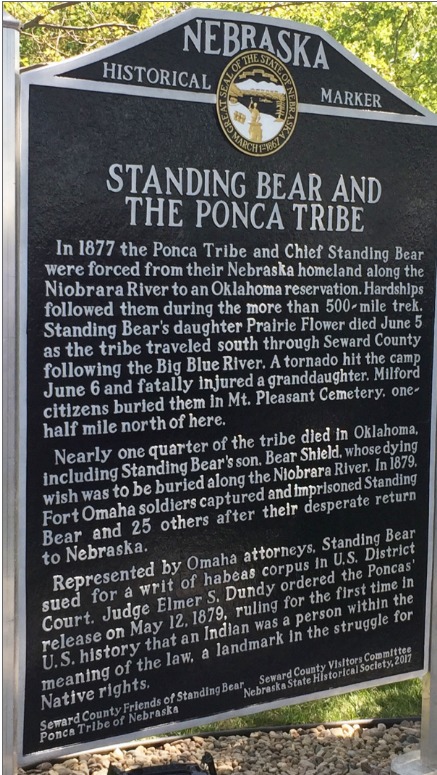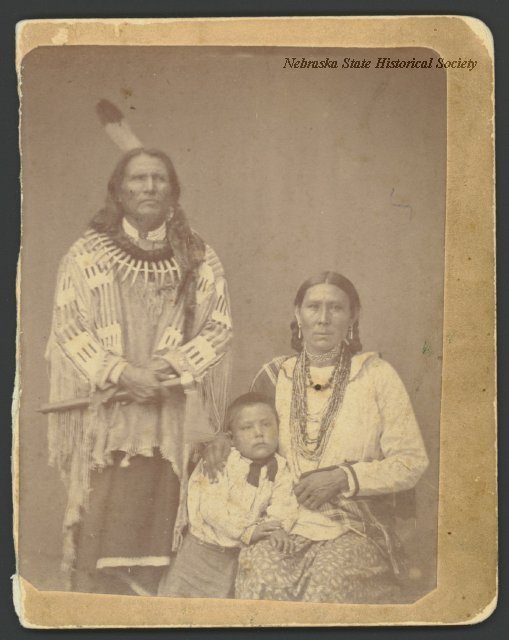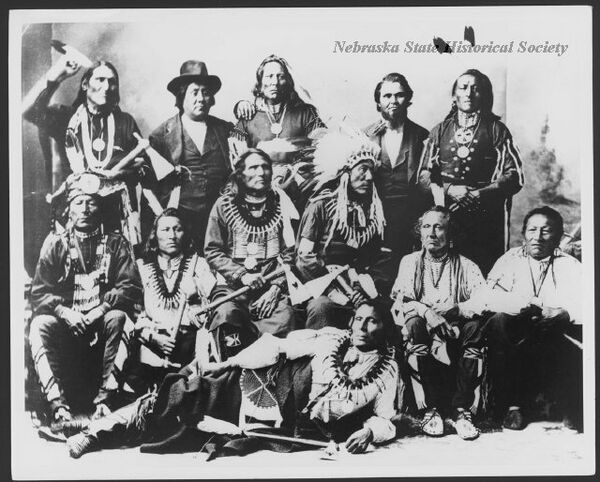Nebraska Historical Marker: Standing Bear and the Ponca Tribe
Nebraska Historical Marker: Standing Bear and the Ponca Tribe
Location
I-80 rest area MM 381, eastbound, Milford, Seward County, Nebraska
View this marker's location 40.82125, -97.060301
View a map of all Nebraska historical markers, Browse Historical Marker Map
Marker Text
In 1877 the Ponca Tribe and Chief Standing Bear were forced from their Nebraska homeland along the Niobrara River to an Oklahoma reservation. Hardships followed them during the more than 500-mile trek. Standing Bear’s daughter Prairie Flower died June 5 as the tribe traveled south through Seward County following the Big Blue River. A tornado hit the camp June 6 and fatally injured a grannddaughter. Milford citizens buried them in Mt. Pleasant Cemetery, one-half mile north of here.
Nearly one quarter of the tribe died in Oklahoma, including Standing Bear’s son, Bear Shield, whose dying wish was to be buried along the Niobrara River. In 1879, Fort Omaha soldiers captured and imprisoned Standing Bear and 25 others after their desperate return to Nebraska.
Represented by Omaha attorneys, Standing Bear sued for a writ of habeas corpus in U.S. District Court. Judge Elmer S. Dundy ordered the Poncas’ release on May 12, 1879, ruling for the first time in U.S. history that an Indian was a person within the meaning of the law, a landmark in the struggle for Native rights.
Further Information
Bibliography
James T King, “’A Better Way:’ General George Crook and the Ponca Indians,” Nebraska History 50 (1969): 239-256
Thomas H Tibbles, “Anecdotes of Standing Bear,” Nebraska History 13 (1932): 271-276
Marker program
See Nebraska Historical Marker Program for more information.


